Productizing Tech: From an Innovative Idea to a Usable Solution
Jan 16, 2024
Jan 16, 2024
Jan 16, 2024
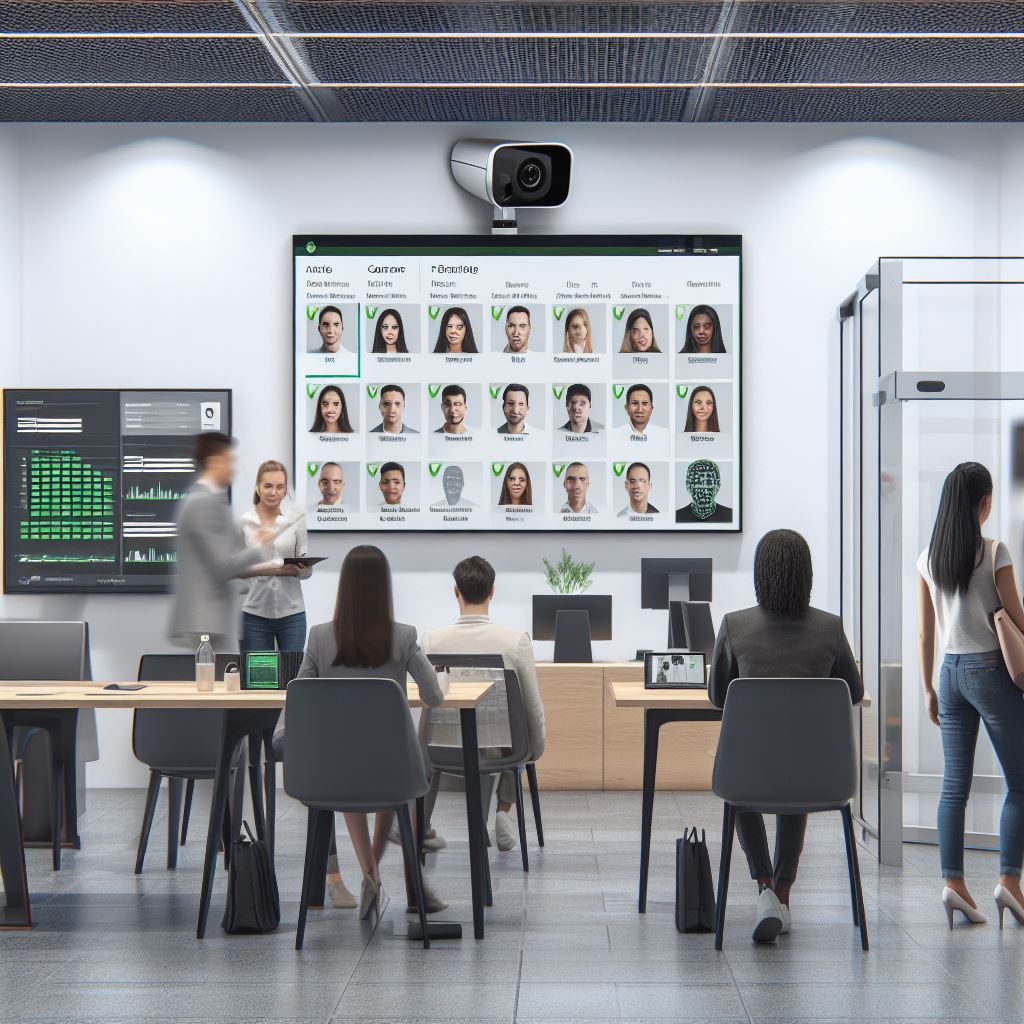

Introduction:
There's a thrill in turning 'what-ifs' into 'what is'. That's the journey we embarked on with our latest project – a smart, automated attendance system that's reshaping how presence is recorded in classrooms and beyond. Here's the story of how we moved from a great idea to a great product that's making a real difference.
Birth of the Idea
In a world where automation is increasingly becoming the norm, relying on manual methods for attendance tracking seemed archaic. The need was clear: a system that could swiftly, accurately, and autonomously register attendance. This was not just about marking presence; it was about efficient data aggregation, real-time updates, and easy access to attendance records.
The Building Blocks
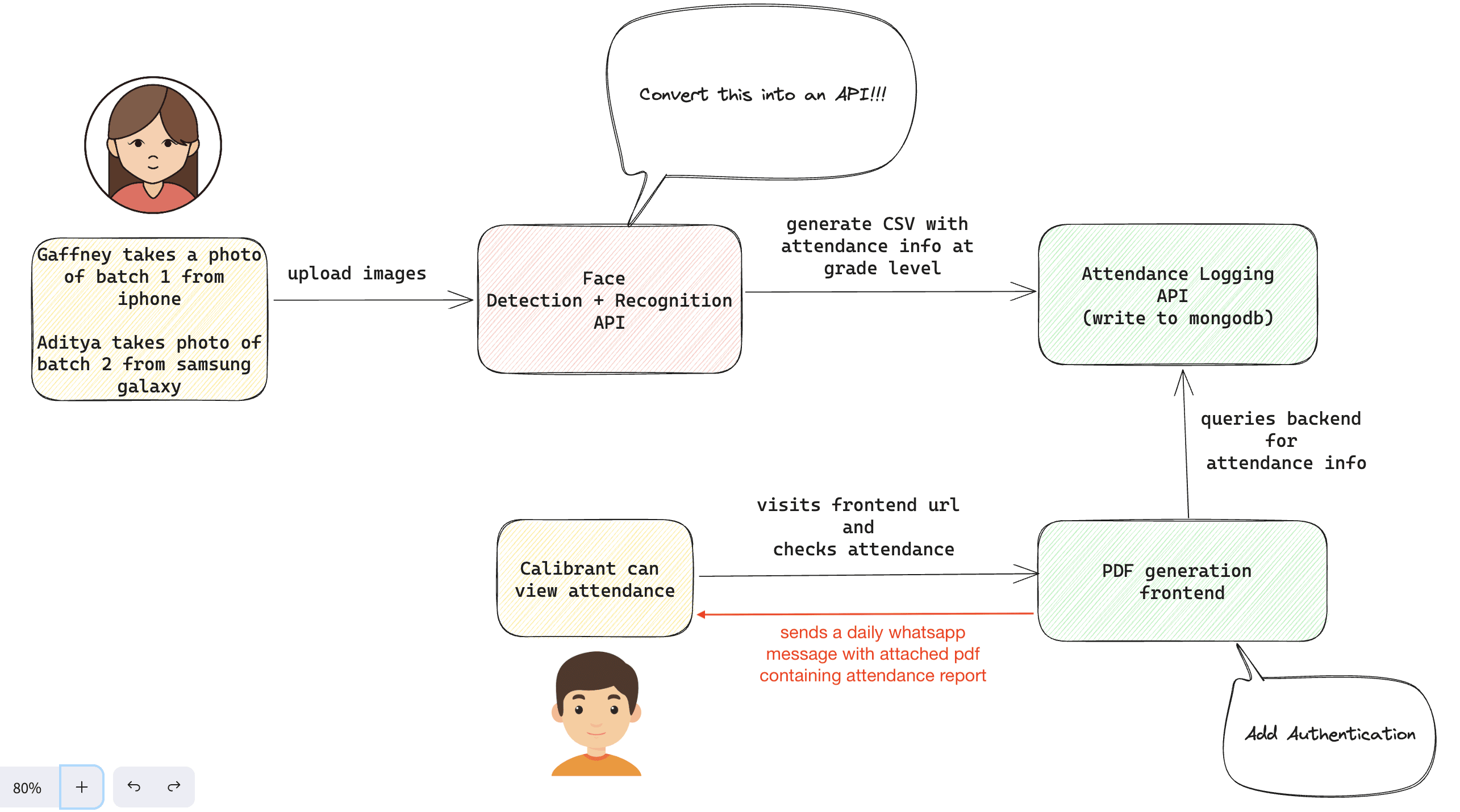
1. Face Detection + Face Recognition API:
A core component of our solution was the Face Detection and Face Recognition API. The idea was simple yet powerful: capture an image, recognize the faces, and log the attendance.
The process, however, had its complexities:
Cloud-First Approach: To ensure scalability and eliminate the need for on-premises infrastructure, the system was deployed on Azure cloud.
GPU Quota Increase: Face recognition, especially at scale, requires substantial computational power. This led us to request an increased GPU quota to handle the load.
Integrating Models: Merging face detection with face recognition was crucial. This ensured that the system could identify faces in an image and then recognize each individual face from the lot.
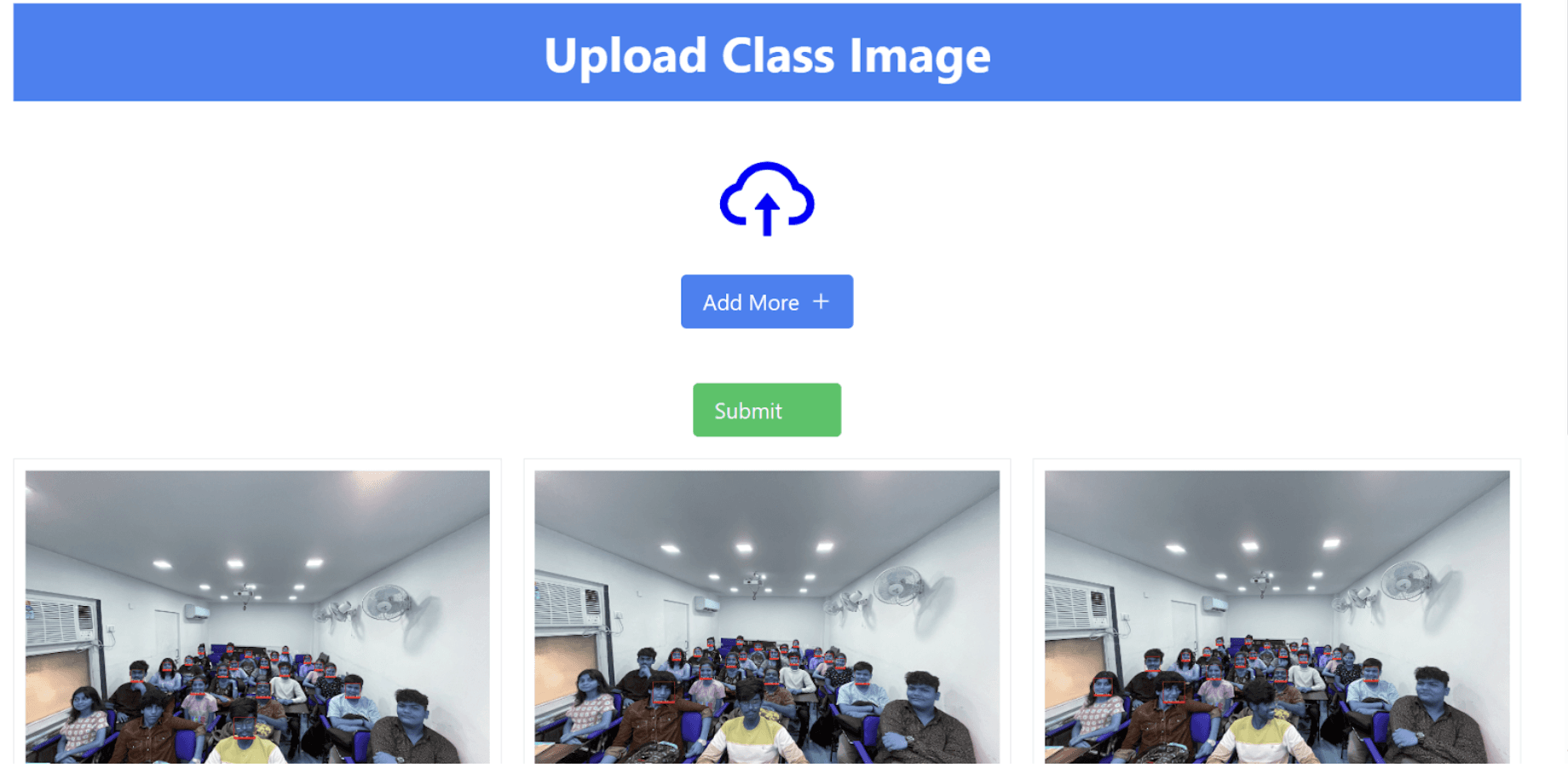
2. Attendance Logging API:
Once the faces were recognized, the next step was logging the attendance. For this, we developed an API that would convert the recognition data into a CSV and subsequently write it to a MongoDB database.

3. Attendance Viewing Frontend:
A system is only as good as its user interface, especially when designed for non-tech-savvy users. We built an intuitive frontend that allowed users to view attendance data with varying levels of granularity – from today's attendance records to aggregated data over custom date ranges. The cherry on top? A feature allowing users to generate PDF reports of the attendance data.
Today's Attendance: With just a few clicks, admins can see who's present today, no fuss, no muss.
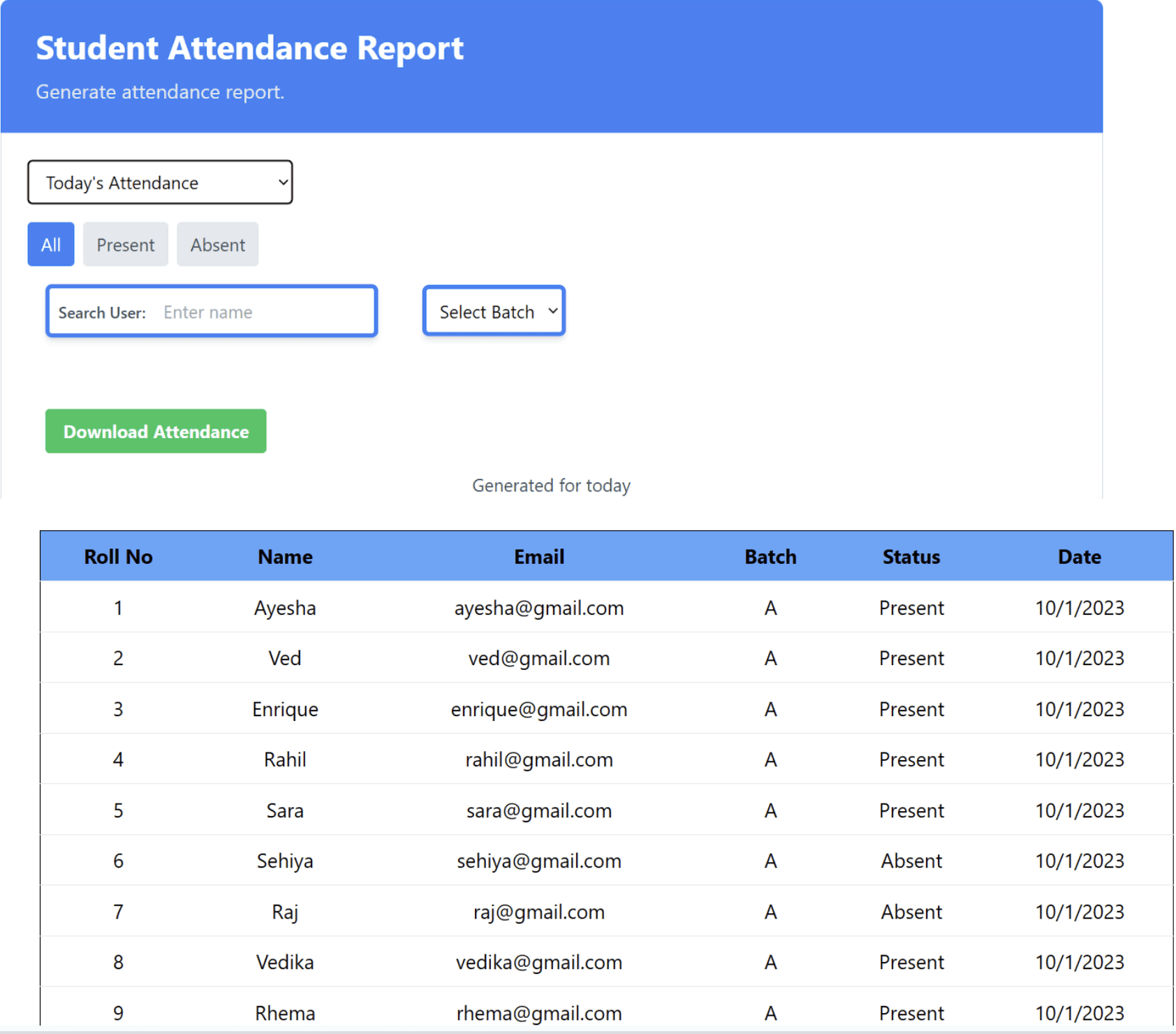
Custom Timeframes: Need to look back or plan ahead? Our custom range feature has got you
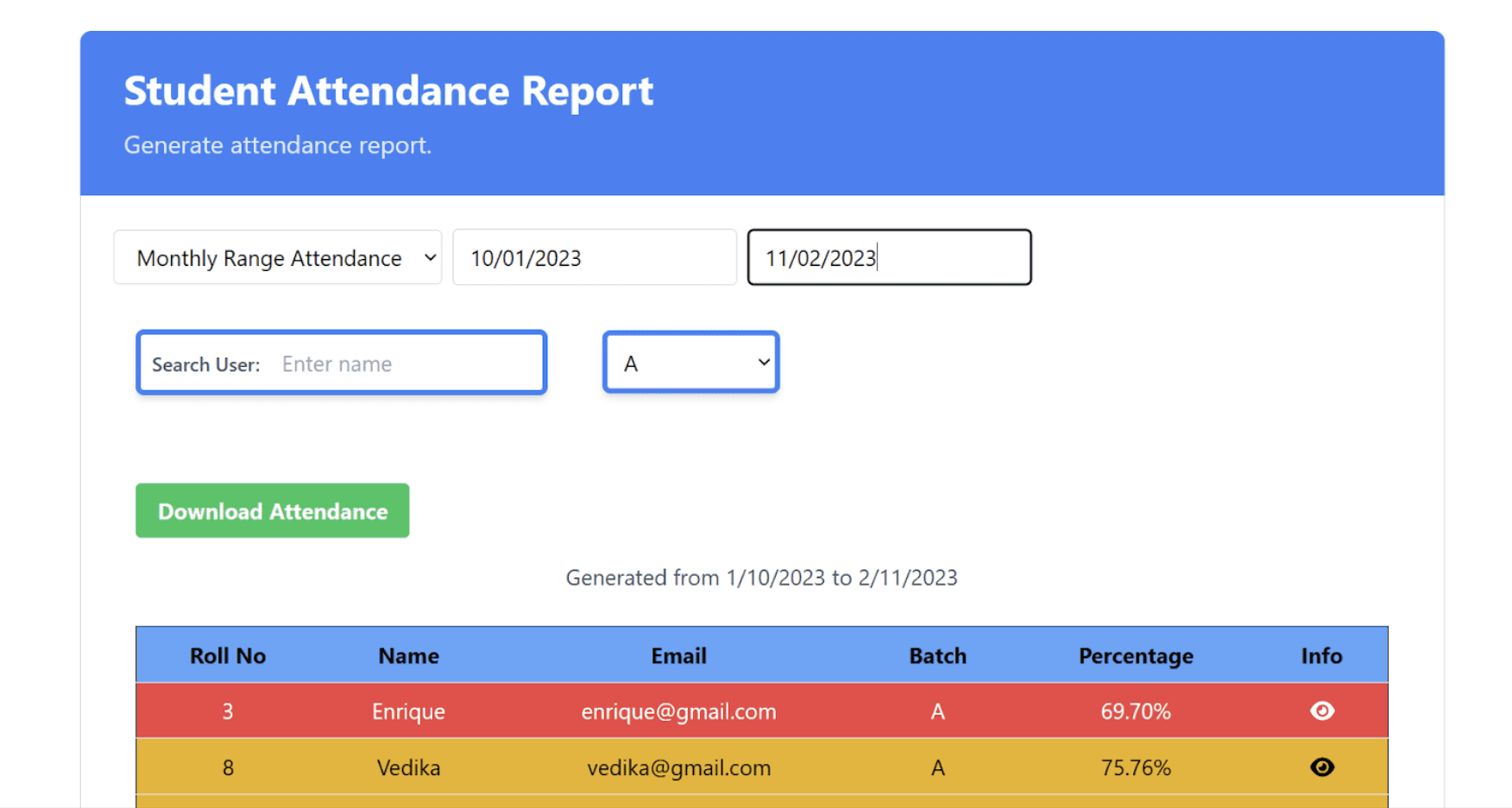
PDF Downloads: Whether it's for one student or an entire batch, downloading attendance records is a breeze.
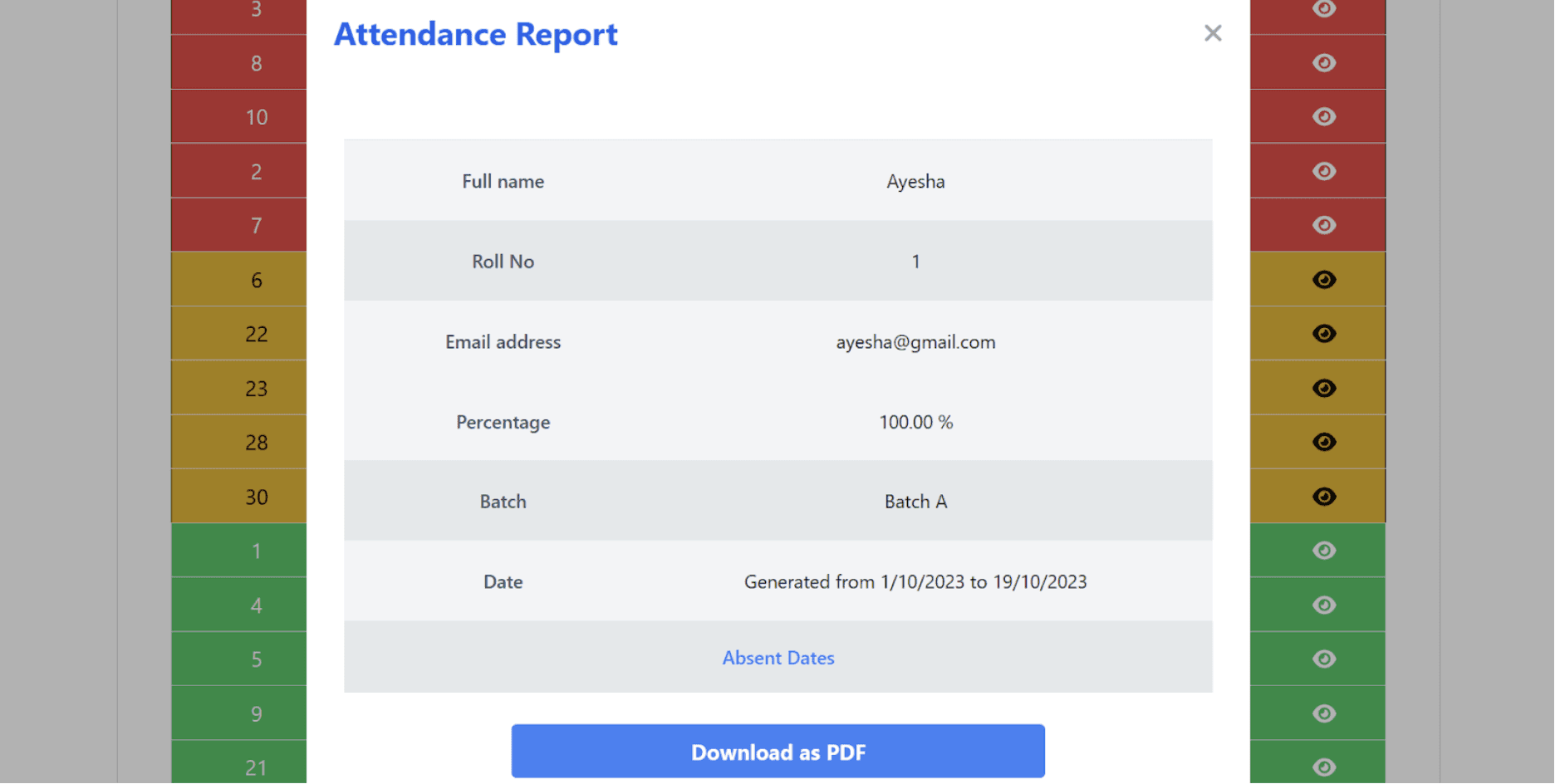
Productizing for the Client
Keeping the client's needs at the forefront, the system was designed to be user-friendly. After all, the primary goal was to offer them the ease of accessing attendance data at their fingertips. The interface was clean, navigation was intuitive, and data retrieval was swift. The ability to generate PDFs allowed for easy sharing and record-keeping, adding another layer of convenience.
Conclusion
From concept to classroom, our attendance tracking system stands as proof: when tech meets practicality, great things happen. This isn't just a tool; it's a testament to tech's potential to simplify and streamline. And we're just getting started.
Introduction:
There's a thrill in turning 'what-ifs' into 'what is'. That's the journey we embarked on with our latest project – a smart, automated attendance system that's reshaping how presence is recorded in classrooms and beyond. Here's the story of how we moved from a great idea to a great product that's making a real difference.
Birth of the Idea
In a world where automation is increasingly becoming the norm, relying on manual methods for attendance tracking seemed archaic. The need was clear: a system that could swiftly, accurately, and autonomously register attendance. This was not just about marking presence; it was about efficient data aggregation, real-time updates, and easy access to attendance records.
The Building Blocks

1. Face Detection + Face Recognition API:
A core component of our solution was the Face Detection and Face Recognition API. The idea was simple yet powerful: capture an image, recognize the faces, and log the attendance.
The process, however, had its complexities:
Cloud-First Approach: To ensure scalability and eliminate the need for on-premises infrastructure, the system was deployed on Azure cloud.
GPU Quota Increase: Face recognition, especially at scale, requires substantial computational power. This led us to request an increased GPU quota to handle the load.
Integrating Models: Merging face detection with face recognition was crucial. This ensured that the system could identify faces in an image and then recognize each individual face from the lot.

2. Attendance Logging API:
Once the faces were recognized, the next step was logging the attendance. For this, we developed an API that would convert the recognition data into a CSV and subsequently write it to a MongoDB database.

3. Attendance Viewing Frontend:
A system is only as good as its user interface, especially when designed for non-tech-savvy users. We built an intuitive frontend that allowed users to view attendance data with varying levels of granularity – from today's attendance records to aggregated data over custom date ranges. The cherry on top? A feature allowing users to generate PDF reports of the attendance data.
Today's Attendance: With just a few clicks, admins can see who's present today, no fuss, no muss.

Custom Timeframes: Need to look back or plan ahead? Our custom range feature has got you

PDF Downloads: Whether it's for one student or an entire batch, downloading attendance records is a breeze.

Productizing for the Client
Keeping the client's needs at the forefront, the system was designed to be user-friendly. After all, the primary goal was to offer them the ease of accessing attendance data at their fingertips. The interface was clean, navigation was intuitive, and data retrieval was swift. The ability to generate PDFs allowed for easy sharing and record-keeping, adding another layer of convenience.
Conclusion
From concept to classroom, our attendance tracking system stands as proof: when tech meets practicality, great things happen. This isn't just a tool; it's a testament to tech's potential to simplify and streamline. And we're just getting started.